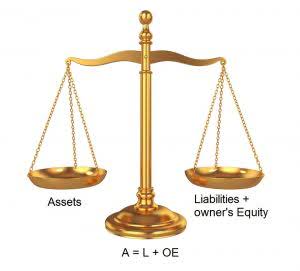
Audits for Legal E-Billing generative AI or large language models involve additional considerations. These audits require assessing potential intellectual property rights concerns, managing hallucinations, making disclosures about AI-generated content, and ensuring data privacy and security. Disclosure management software streamlines the key finance process and reduces errors immediately. What models and simulations should not be used for, however, is to replace business acumen and common sense. Modeling and simulation by their nature look primarily at “known unknowns” and present results in terms of the probability of an outcome occurring—there is always some uncertainty.
- The audit risk model brings out the mathematics behind an auditor’s discretion of your security controls and the confidence they have in your cybersecurity posture.
- The audit risk model is a function of RMM (which is made up of IR and CR) and detection risk (DR).
- The following is one of the best audit materials that could help you better understand audits in more depth and detail.
- Likewise, the auditor needs to reduce audit risk to acceptable low to make sure that they do not fail to detect any material misstatement that happens to the financial statements.
- Inherent risk is perhaps the hardest component of the audit risk model to mitigate.
- Let’s assume you already have a better understanding of audit risks and let’s check the above if you are still not sure.
How to audit AI systems for transparency and compliance

When we look at the results of an audit, we assume that the content in it is correct, but there is no way to guarantee that fact. It will take a lot of time to go through all the research that was done by the auditors to verify everything. Many businesses have suffered losses because there were audits that failed to discover the problems and risks present within the organization. Accounting for audit risks enables businesses to ensure that they are prepared for such an Certified Public Accountant eventuality. In conclusion, as we traverse this complex business environment, it is imperative to continuously re-evaluate and refine our audit processes. The path to corporate excellence is paved with genuine introspection, of which audits are an integral part.

Managing Audit Risk: Auditor Tools to Mitigate Risk
- However, some companies lack stringent internal data governance, enabling potential misrepresentation or concealment of data from auditors.
- After all, understanding business nuances, stakeholder relationships, and company culture can offer insights no machine can decipher.
- Transactions are recorded by the cashier when receiving money from the customers for the generation of food tickets or receipts, which are redeemed for food.
- Also, auditor responses should not be too vague such as ‘increase substantive testing’ without making it clear how, or in what area, this would be addressed.
- An auditor will carry out their process believing that the provided information is accurate and well-maintained.
RMM is the risk that the financial statements are materially misstated before the audit. In order to reduce the complexity of minimizing audit risk, auditors utilize a suite of sophisticated tools designed to enhance the precision and reliability of their work. These tools are not just efficiency enablers; they are crucial in deepening the auditor’s understanding of the financial audit risk model landscape they navigate, ensuring that no stone is left unturned in the quest to validate financial statements. Inherent risk and control risk, deeply rooted in the entity’s operations and its surrounding environment, demand an auditor’s astute evaluation. These components require a thorough analysis at both the overarching financial statement level and the more granular assertion level. Auditors can manage detection risk by carefully planning the scope, timing, and depth of their processes and evident collection so that any material misstatements are identified and addressed early on.
What is Internal Audit Department? (Responsibilities and More)

Responses are not as detailed as audit procedures; instead they relate to the approach the auditor will adopt to confirm whether the transactions or balances are materially misstated. Therefore, in relation to the risk of going concern, the response is to focus on performing additional going concern procedures, such as reviews of cash flow forecasts. They can however balance these risks by determining a suitable detection risk to keep the overall audit risk in check. The extent and nature of audit procedures is determined by the level of detection risk required to bring audit risk to an acceptable level. If inherent risk and control risk are assumed to be 60% each, detection risk has to be set at 27.8% in order to prevent the overall audit risk from exceeding 10%.
- Unlike inherent risk and control risk, auditors can influence the level of detection risk.
- Detection risk is the risk that audit evidence for any given audit assertion will fail to capture material misstatements.
- The auditor is not responsible for fraud, but they are responsible for providing reasonable assurance to the users of financial statements.
- The path to corporate excellence is paved with genuine introspection, of which audits are an integral part.
- A GRC (Governance, Risk, and Compliance) automation tool like Sprinto, with its dedicated audit dashboard, makes things easier for both the business and the auditor.
Governance is important to monitor and oversee the quality of the assumptions used in the various models, and to intervene if competing models are presenting divergent outputs and causing confusion. Dr. Patchin Curtis, director, Deloitte & Touche LLP in the United States, and leader of Deloitte’s Center for Risk Modeling and Simulation, discusses the whys and hows of making risk modeling an integral part of enterprise risk management. Let us understand the various ways and means to minimise and control this type of risk in business.
- First, the act of creating a model inherently involves stripping away extraneous information so that only the essential elements remain, thus reducing a multidimensional problem to a more manageable form.
- Inherent risk is also more likely when the transactions in which a client engages are highly complex, and so are more likely to be completed or recorded incorrectly.
- The book covers many areas of audit and focuses deeply on performing a risk-based audit approach.
- Audit risk is, and will continue to be, an important element of the Paper F8 syllabus.
